XVR UGM: Feuerwehr Dortmund, Germany
Two weeks ago, the XVR User Group Meeting crew headed to Dortmund, Germany, for the second UGM of the season, this time for our German-speaking users. The Dortmund Fire Service hosted almost 40 participants at their training centre for 2 exciting days of presentations, experience-sharing, and deep-diving into the newest XVR On Scene features.
During the presentations, it became clear that our users by far were most excited about the new “tool and inventory” system that will be available for participants using a VR head-mounted display (HMD). This new functionality builds on the existing possibility to pick up certain objects and hand-held tools, such as thermal cameras or hand weapons. We have developed a range of new handheld tools such as a baton, fire nozzles, a taser, and more – each able to carry out one corresponding action. Each participant can store these tools in their own personal inventory or retrieve them from so-called “object sockets” placed on walls or vehicle storage compartments. Watch this space for examples of how the new “tool and inventory” system will work in practice!
We were grateful to have 5 XVR users present their use cases with us:
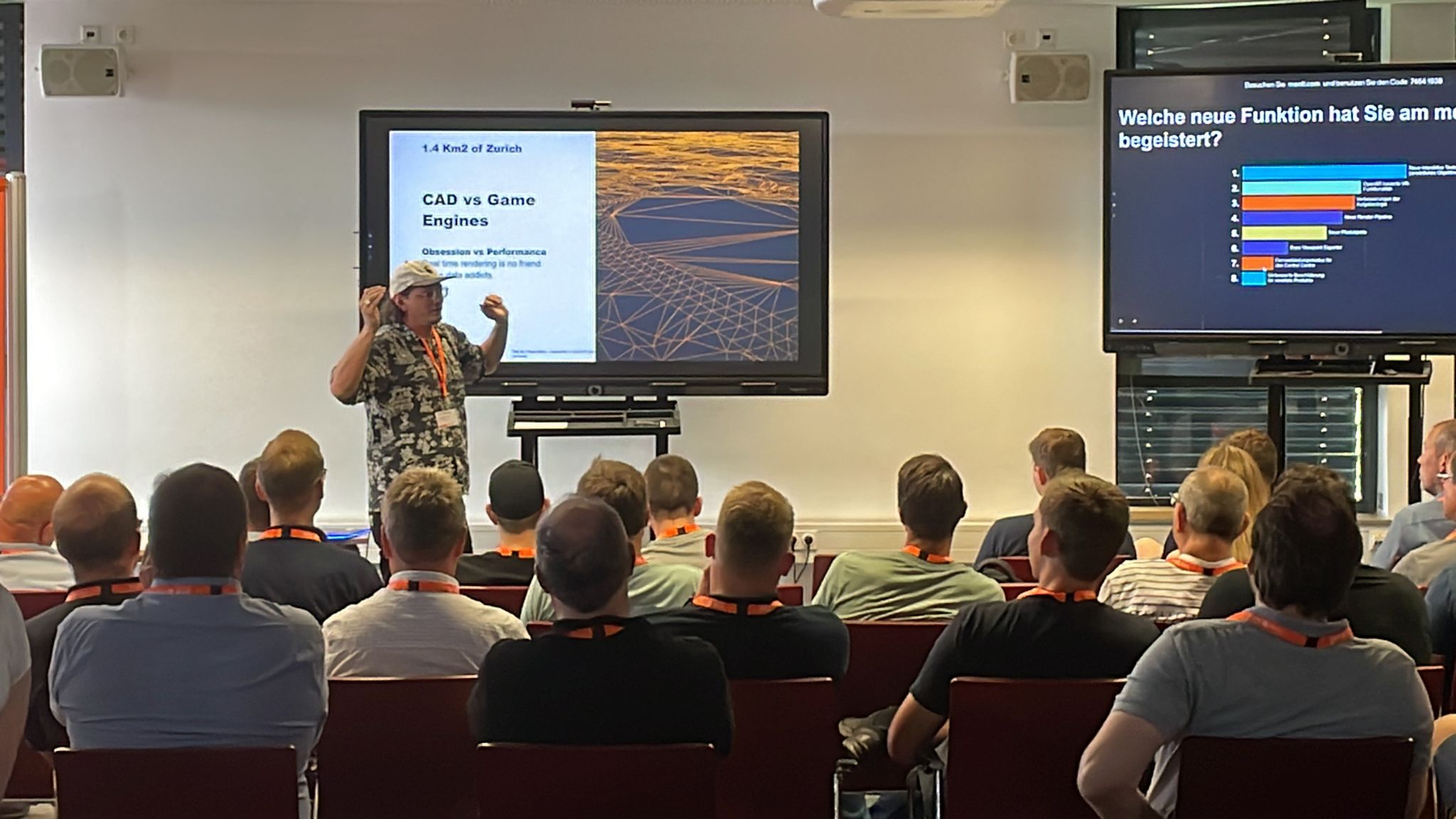
Julius Vollenweider from Stadtpolizei Zürich wowed everyone with the enormous environment he had built using Google Maps to emulate part of Zürich city, including the football stadium. Vollenweider built it with the purpose of training skills such as riot control for police. His scenario demonstrated just how much can be achieved with XVR Simulation – but also the amount of work, skill and creativity needed to accomplish this.
Fridli Jacober presented how they at CoNeT in Switzerland use a mobile XVR training centre to provide incident command training on location for emergency services – and what their journey has been to develop their offerings. Their incident command training buses are fitted with several screens and participant stations where trainees can train reconnaissance, communication and decision-making.
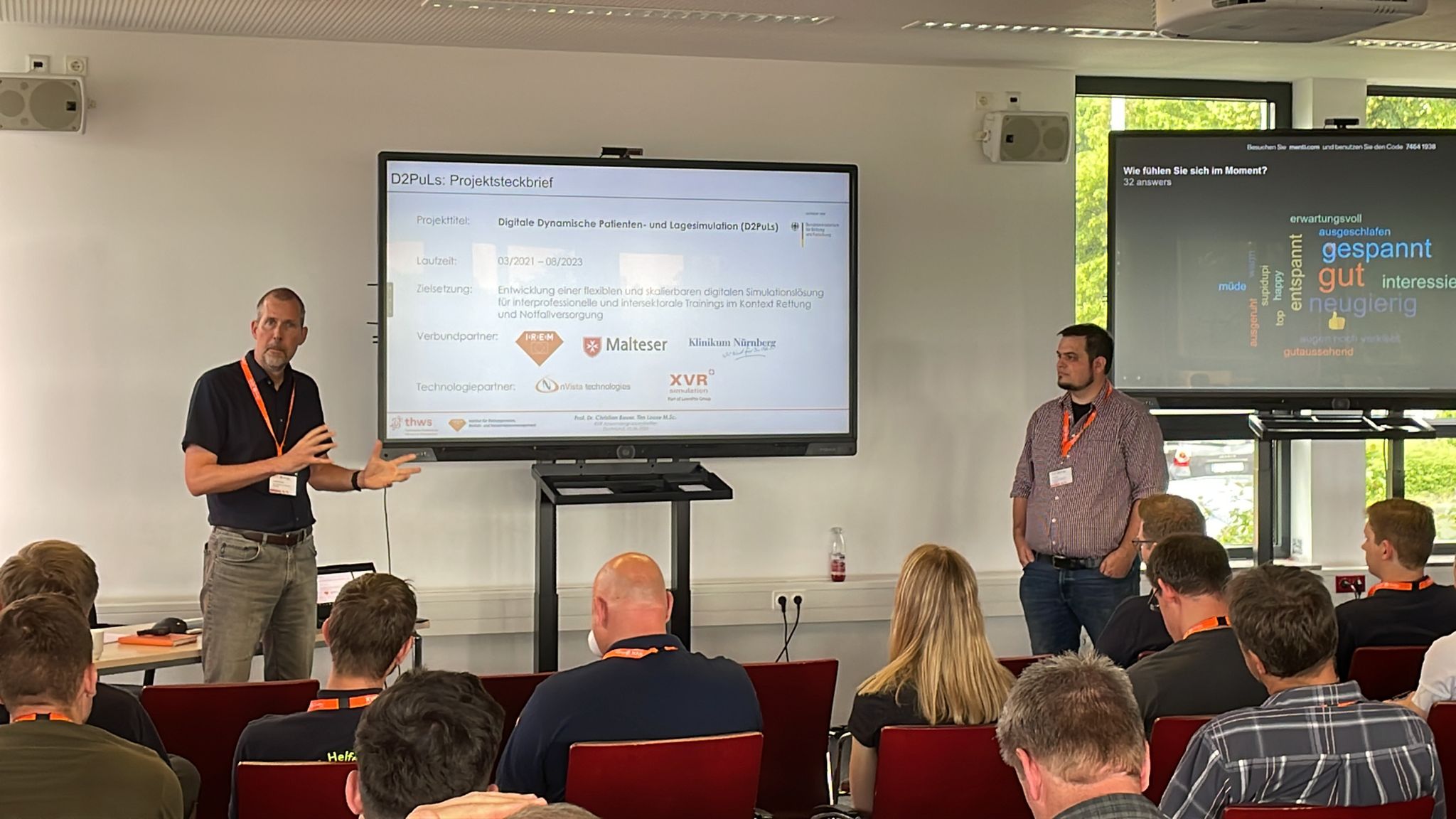
Christian Bauer from the Technical University of Würzburg-Schweinfurt described how they use the XVR platform for the D2PuLs research project. The aim is to develop an innovative, cross-sectoral approach for providing emergency medical staff simulation training on large-scale incidents with mass casualties. The XVR platform provides the simulated incident environment in which participants must orient themselves and perform patient treatment.
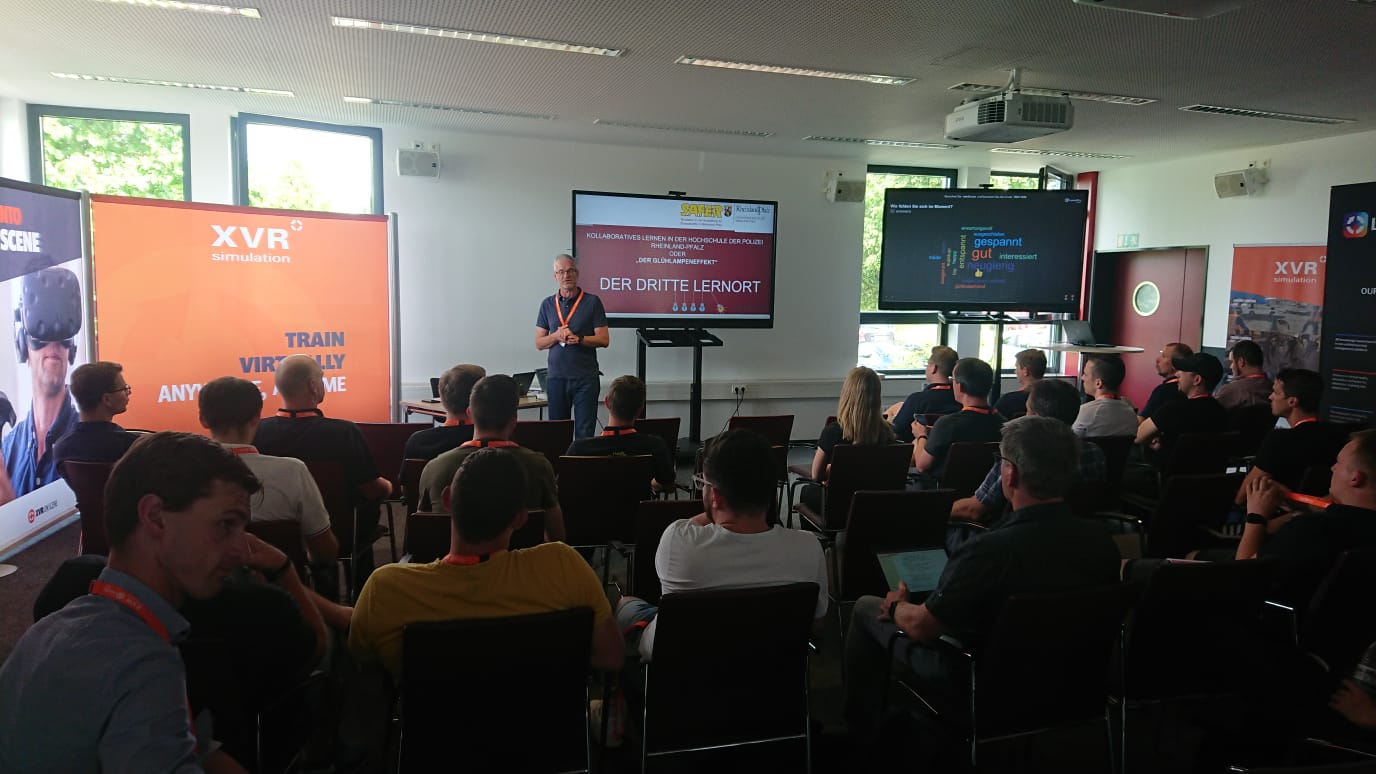
Martin Gruner from the Police Academy of Rhineland-Palatinate explained how they use the XVR platform to train police cadets. Virtual reality training plays an important part of their educational curriculum, and their facilities allow them to run immersive individual, classroom and “multi-agency” trainings and exercises using XVR.
Matthias Lemgen from the Fire and Disaster Management Academy Rhineland-Palatinate shared how they have recently improved and modernised their simulation centre. Their flexible setup now allows them to set up multiple booths for individual and team trainings as well as observation stations for their students.
A big thank you to all the users who travelled from near and far to join us in Dortmund – we appreciate all the feedback and stories you shared with us! Thank you also to Feuerwehr Dortmund for having us. Until next time!
Overview
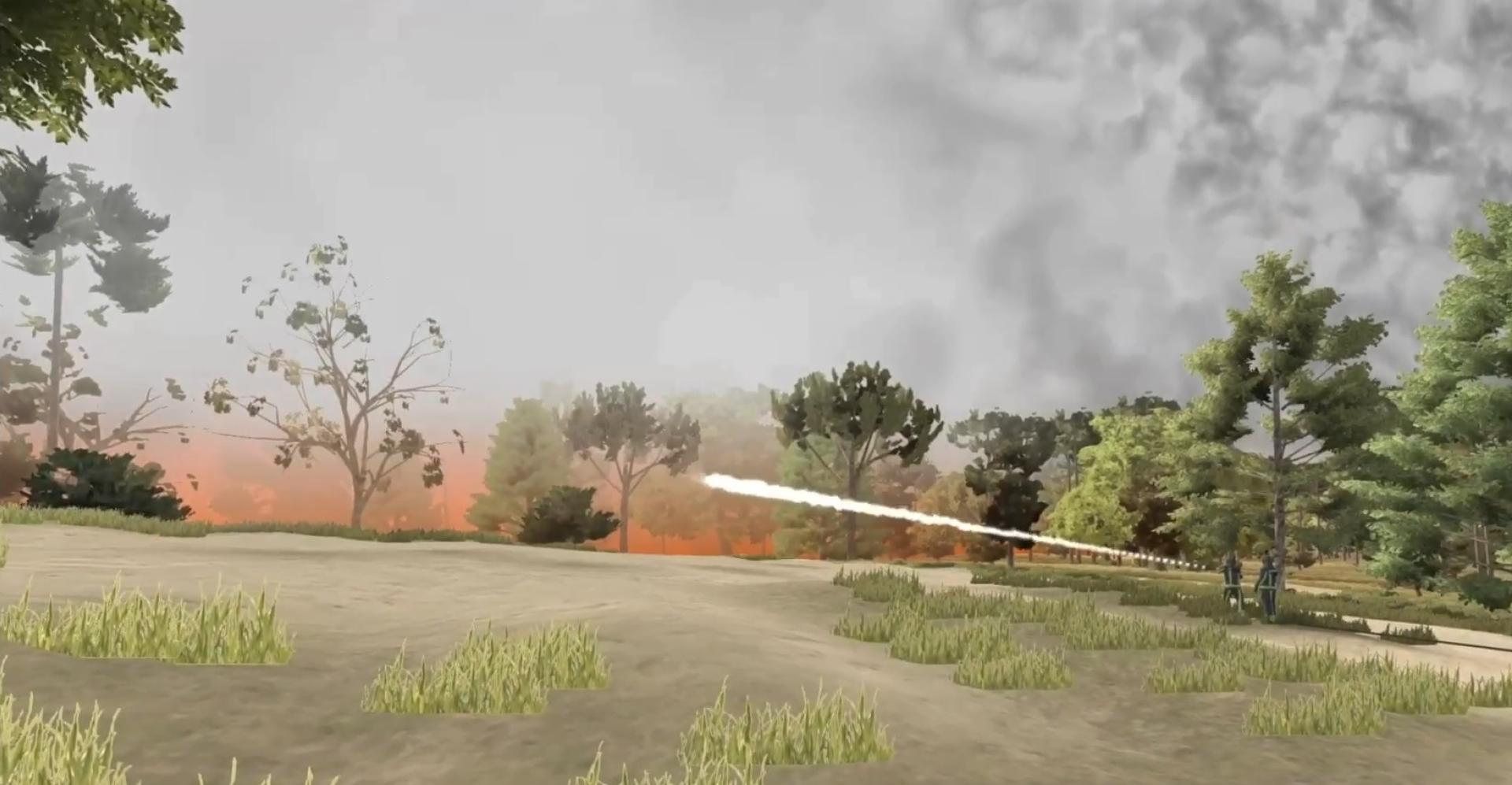
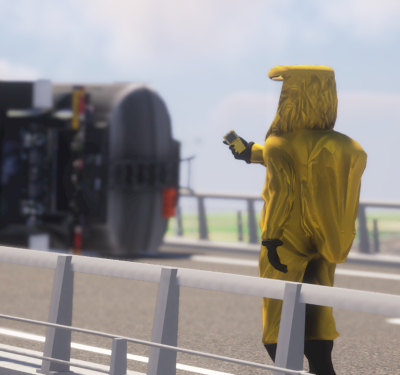
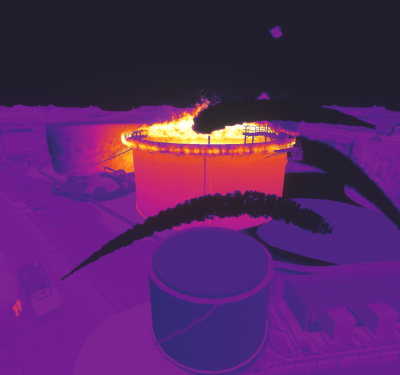
.png?resolution=400x375)